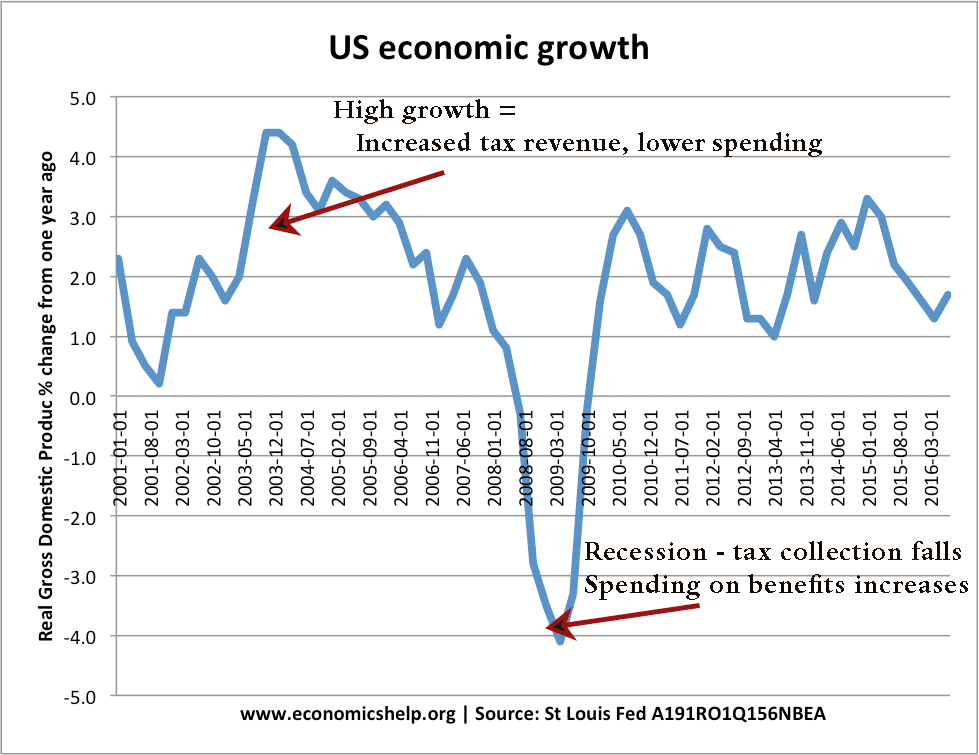Automatic stabilisers refer to how fiscal instruments will influence the rate of growth and help counter swings in the economic cycle. Automatic stabilisers will influence the size of government borrowing.
Example of automatic stabilisers
- High Growth – In a period of high economic growth, automatic stabilisers will help to reduce the growth rate. With higher growth, the government will receive more tax revenues – people earn more and so pay more income tax (note the tax rate doesn’t change, the amount received just becomes higher). With higher growth, there will also be a fall in unemployment so the government will spend less on unemployment benefits.
- In a period of high growth – ceteris paribus government borrowing will fall.
- Recession. In a recession, economic growth becomes negative. However, automatic stabilisers will help to limit the fall in growth. With lower incomes, people pay less tax, and government spending on unemployment benefits will increase. This increase in benefit spending and lower tax collection helps to limit the fall in aggregate demand.
- In a recession – ceteris paribus government borrowing will increase.
Example of Automatic Stabilisers in US economy
In periods of high economic growth – government spending on unemployment benefits will fall – causing an improvement in government finances. Also, with higher growth, there will be a rise in income tax receipts and corporation tax receipts – this helps to limit the growth rate.
In a recession, the opposite happens. Tax receipts fall – due to people earning lower incomes. Also, sales tax revenues will fall as people spend less.
In periods of positive economic growth – we see low levels of annual government borrowing.
In the recession, with falling GDP, the government deficit increases sharply.
Complications
- In 2003, the Bush administration passed generous tax cuts – reducing the rate of income tax. Without these tax cuts, government borrowing would have been even lower in 2003.
- In 2009, there was a small fiscal expansion – higher government spending, e.g. bailout car manufacturers. It wasn’t just automatic stabilisers.
Keynesian perspective
Keynes noted that in a recession, confidence falls and the private sector cut back on spending and investment. Therefore, we see a rise in private savings and a fall in aggregate demand. This can worsen the recession. This is why Keynes advocated government borrowing – to make use of these surplus savings. Keynes argued that automatic stabilisers may not be enough, and the government should specifically find public sector projects to inject money into the circular flow. This is known as discretionary fiscal policy.
Related
- Fiscal Policy – discretionary stabilisers
- Policies to reduce the budget deficit
- Benefits of economic growth


